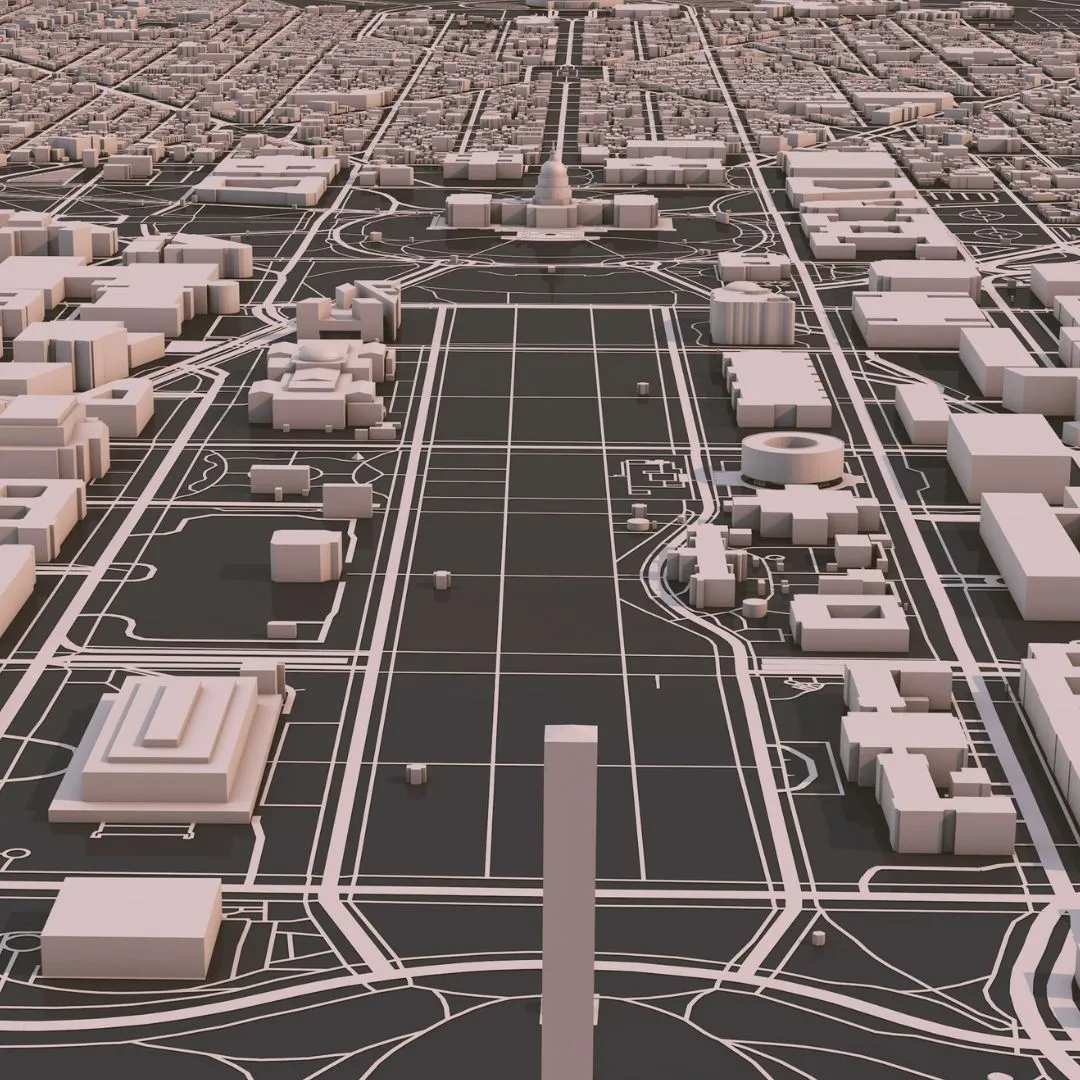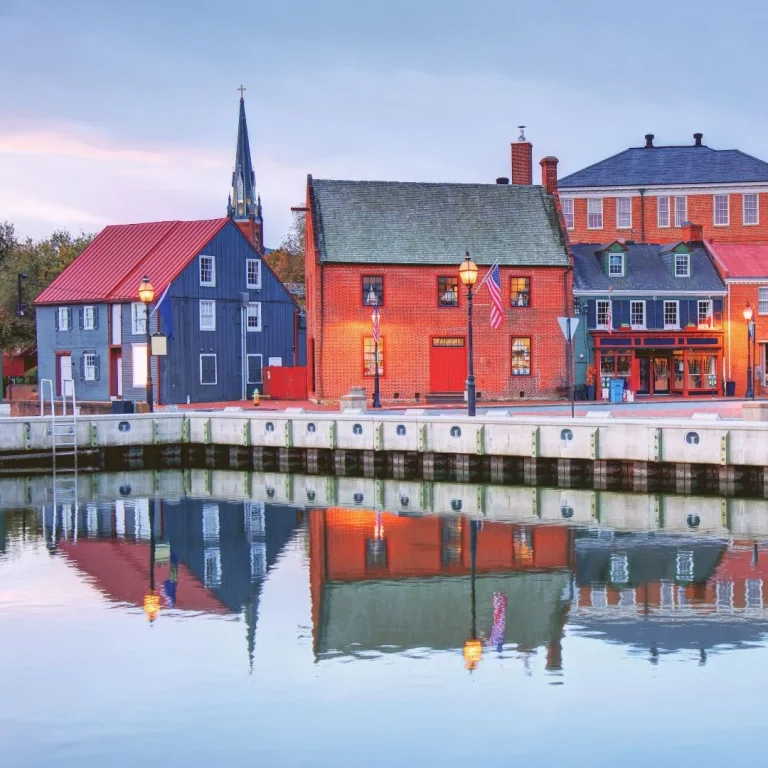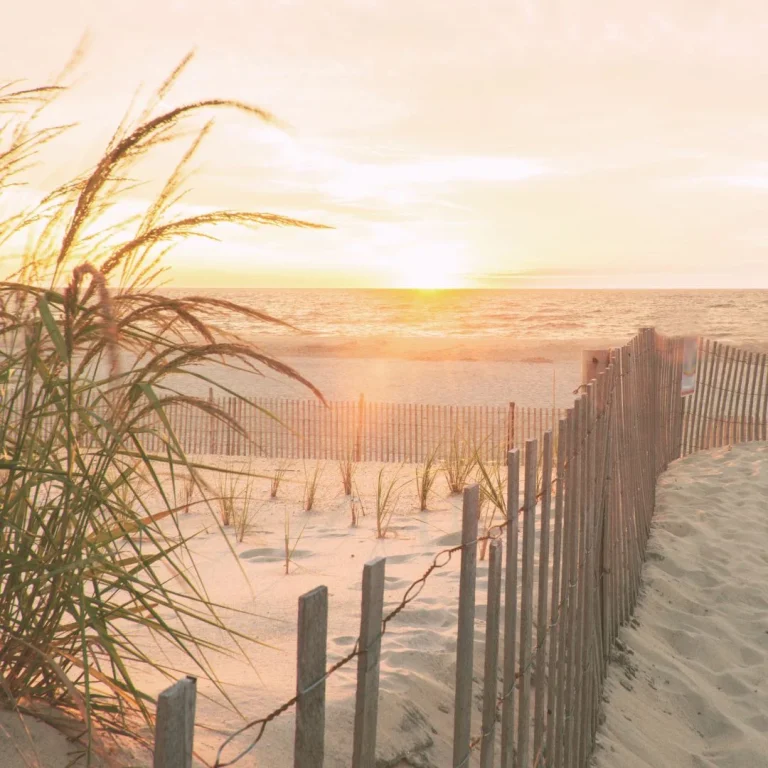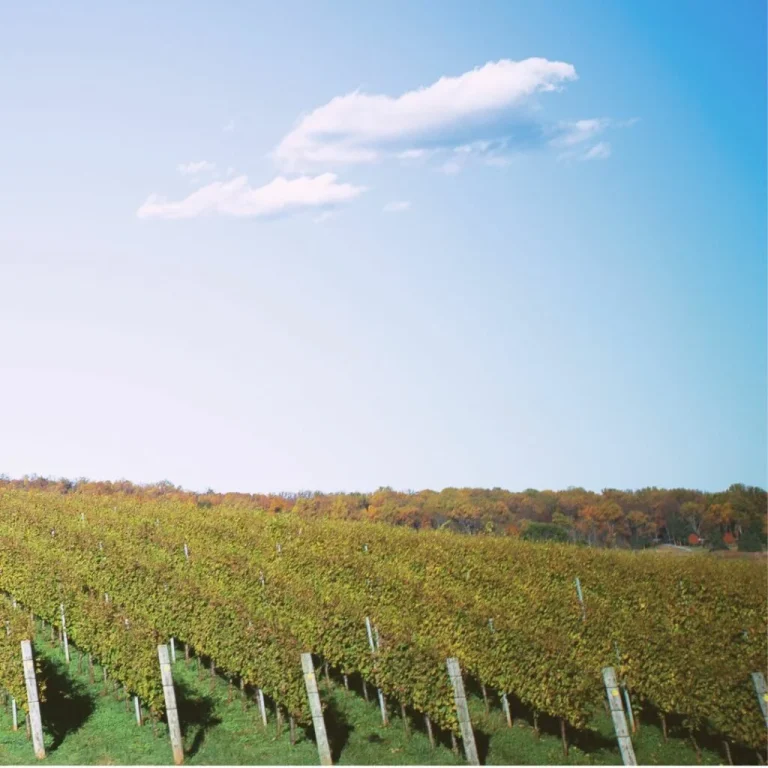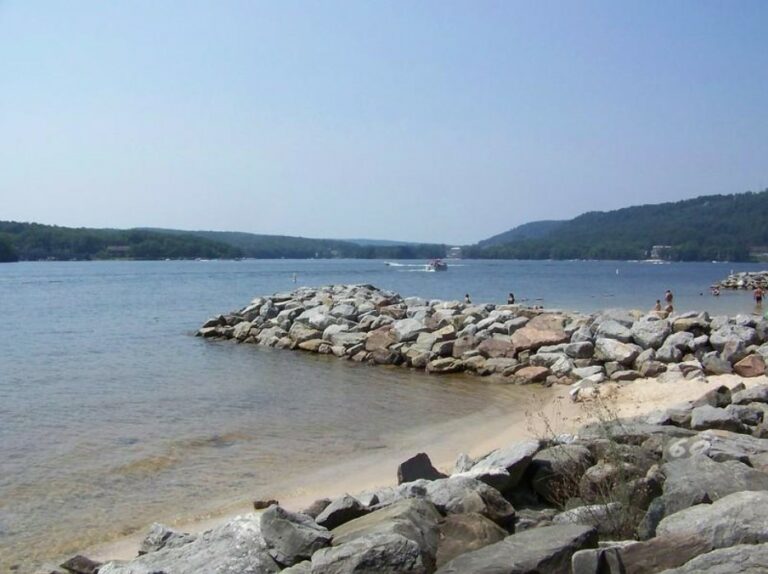The layout of Washington DC monuments reflects the city’s rich history and prominence as the capital of the United States.
Layout Of Washington DC Monuments: Historical Context
The layout of Washington DC monuments can be traced back to Pierre L’Enfant. His plan was to establish the city as a symbol of national unity, featuring grand boulevards, public spaces, and strategically located monuments. L’Enfant’s plan has evolved over time under the guidance of the National Capital Planning Commission, ensuring that the city remains a welcoming and accessible space for visitors and residents alike.
One of the main elements of L’Enfant’s plan was the establishment of “outdoor rooms,” or open spaces that are surrounded by significant buildings and monuments. This would allow visitors to experience the grandeur of the city.
The National Mall, pictured below, is a prime illustration of this concept. It is flanked by several iconic monuments and museums. Public transportation options, such as the Metro and bus systems, make navigating the capital city more convenient for tourists and locals alike.
Layout of Washington DC Monuments: Map
The map below shows several of the most iconic DC monuments. Many of these are a short walk from each other.
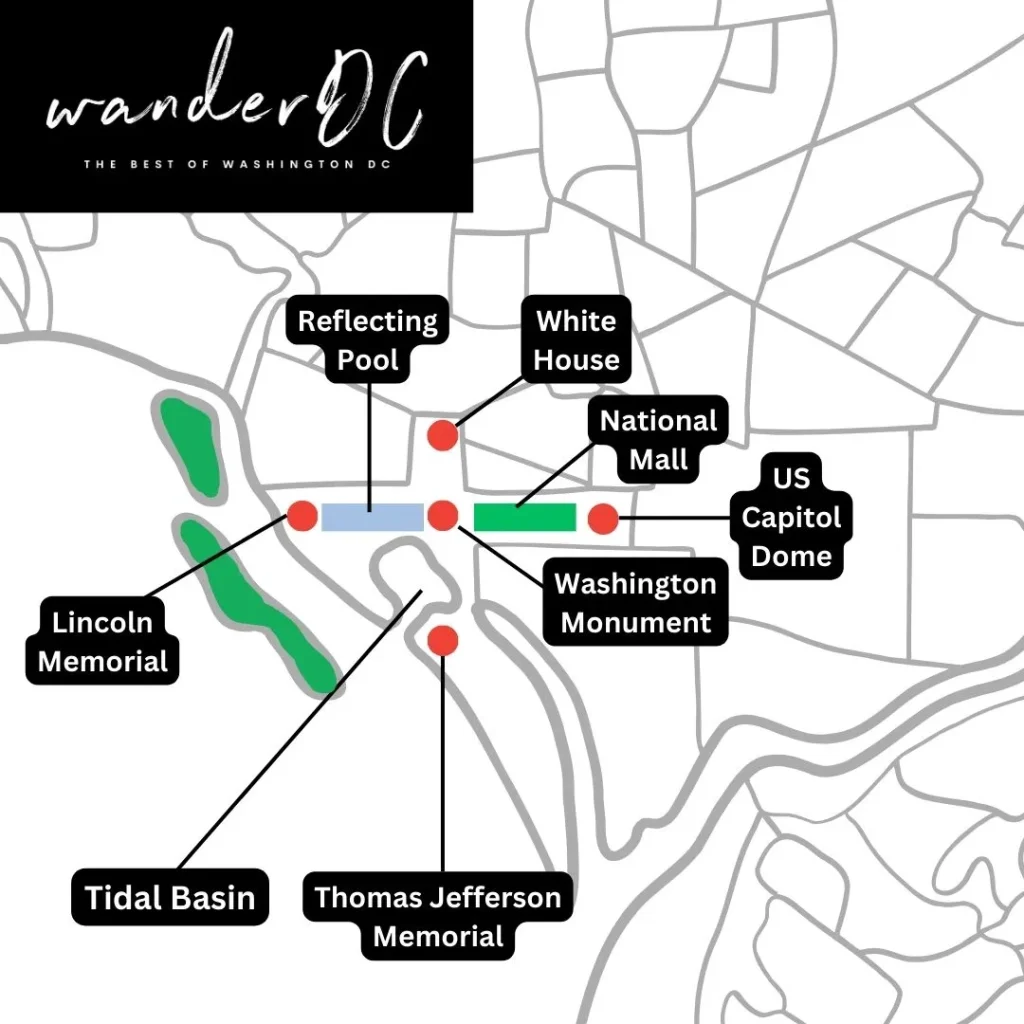
The above map shows the layout of Washington DC monuments. These national monuments line the National Mall. The National Mall in Washington, D.C., is bordered by several major streets.
The streets that surround the National Mall are Constitution Avenue to the north, Independence Avenue to the south, 1st Street to the east, near the United States Capitol, and14th Street to the west, near the Washington Monument. These streets outline the rectangular area of the National Mall, which is home to many of the nation’s iconic monuments and museums.
The National World War II Memorial sits at the opposite end of the reflecting pool to the Lincoln Memorial. It is between the Washington Monument and the Lincoln Memorial.
Other famous sites here are Vietnam Veterans Memorial Wall, Thomas Jefferson Memorial, the Smithsonian Museums, the National Archives, and theMartin Luther King Jr. Memorial.
Layout Of Washington Monuments: Famous Structures
Below is a list of some of the most famous and iconic structures that make up the city today.
Lincoln Memorial
The Lincoln Memorial is an iconic symbol of American history, dedicated in honor of the 16th U.S. President, Abraham Lincoln. Situated at the western end of the National Mall, the memorial features a grand statue of a seated Lincoln surrounded by inscriptions of his famous speeches. Overlooking the Reflecting Pool, it offers a stunning visual connection to the National World War II and the Korean War Veterans Memorials located nearby.
Washington Monument
The Washington Monument is an impressive obelisk towering over the National Mall at 555 feet. It honors the first American president and Revolutionary War hero, George Washington. The monument is one of the oldest and most famous sites in Washington, D.C.
Vietnam Veterans Memorial Wall
The Vietnam Veterans Memorial Wall is a poignant tribute to the servicemen and women who fought in the Vietnam War. Composed of two long, polished black granite walls, the names of over 58,000 fallen soldiers are etched into the surface. The reflective nature of the wall creates a sense of unity and healing, as visitors can see themselves in the names, symbolizing the deep connection between the past and the present.
Thomas Jefferson Memorial
The Thomas Jefferson Memorial stands as a tribute to the third U.S. President and one of the founding fathers, Thomas Jefferson. This neoclassical memorial is reminiscent of the Roman Pantheon, featuring a domed structure with a statue of Jefferson in the center. Located near the Tidal Basin, it offers a picturesque setting amid cherry trees, making it a popular spot during the Cherry Blossom Festival.
Martin Luther King Jr. Memorial
The Martin Luther King Jr. Memorial is a lasting symbol of the civil rights movement in America. It features a 30-foot tall sculpture of King carved from the “Stone of Hope,” surrounded by inscriptions from his speeches. Dedicated in 2011, this powerful memorial is situated along the Tidal Basin, near the Franklin Delano Roosevelt (FDR) Memorial, and across from the Thomas Jefferson Memorial.
The White House
The White House is the official residence and workplace of the President of the United States. It is located at 1600 Pennsylvania Avenue NW and built between 1792 and 1800. The main building, designed by architect James Hoban, is made of white-painted Aquia Creek sandstone. It houses the Executive Office of the President and various meeting rooms, such as the West Wing and the East Room.
United States Capitol
The United States Capitol building stands prominently on Capitol Hill and serves as the meeting place of the United States Congress. Completed in 1800, the Capitol has been the hub of legislative activities ever since. The building’s iconic dome and central rotunda showcase the stunning architectural features that make it a cherished landmark.
Union Station, a major transportation hub located just a few blocks away from the Capitol, allows for easy access to and from this emblem of American democracy. Union Station is not only vital for facilitating public transit within the city, but it also serves as a destination for dining and shopping.
Supreme Court
The Supreme Court is the highest court in the United States and situated on Capitol Hill, adjacent to the Capitol building itself. This esteemed institution consists of nine justices, appointed for life, who are responsible for interpreting the Constitution and making significant legal decisions for the country. Designed by architect Cass Gilbert, the building’s neoclassical architecture, with its marble façade and grand columns, exhibits a sense of solemnity befitting its role in upholding justice.
In summary, the layout of Washington DC’s monuments, landmarks, and institutions reflects the historic and political significance of these iconic structures. From the White House and United States Capitol to the Supreme Court, each site offers insight into the nation’s rich past and serves as a reminder of the values and principles that guide American democracy.
Tidal Basin
The Tidal Basin is a man-made reservoir located between the Potomac River and the Washington Channel. This picturesque area is particularly famous for its cherry trees, which were gifted to the United States by Japan in 1912. Every spring, tens of thousands of visitors come to the Tidal Basin to admire the stunning cherry blossoms in full bloom.
Potomac River
The Potomac River played a significant role in the development of Washington, D.C. as it provided easy access for transportation and commerce. Stretching over 400 miles, the river flows through four U.S. states and the District of Columbia.
Its shores have several popular recreational spots for locals and tourists, including the Georgetown Waterfront Park and the Mount Vernon Trail, which offers picturesque views of the river and the city.
Constitution Gardens
Constitution Gardens is a 50-acre park located within the National Mall. This greenspace serves as a place of respite and reflection, featuring meandering pathways, an island-speckled pond, and numerous benches. One of its key features is the 56 Signers of the Declaration of Independence Memorial, which is comprised of 56 stone pillars representing each signer.
Washington, D.C.’s layout showcases a seamless blend of natural features and public spaces, such as the Tidal Basin, Potomac River, and Constitution Gardens. These vibrant locations form a backdrop to the city’s famous monuments, allowing visitors to enjoy the beauty of nature while exploring the rich history of the nation’s capital.
Cultural Significance
Washington D.C. monuments hold great cultural significance and have served as the backdrop for various events over the years. From historic speeches to commemorations, the monuments continue to symbolize national unity and pride.
Famous Speeches
Throughout history, Washington D.C. monuments have been the venue for some of the most memorable and influential speeches in American history.
Several famous speeches have been delivered at the Lincoln Memorial. Some of the most notable speeches include:
- Martin Luther King Jr.’s “I Have a Dream” (1963): Delivered during the March on Washington for Jobs and Freedom, this is perhaps the most famous speech given at the Lincoln Memorial. King spoke of his dream of a United States free of segregation and racism.
- Marian Anderson’s Easter Sunday Concert (1939): After being denied the opportunity to perform at the Constitution Hall by the Daughters of the American Revolution because of her race, renowned African American contralto Marian Anderson gave a concert on the steps of the Lincoln Memorial. Her performance became a significant moment in the struggle for civil rights and was attended by thousands.
- John F. Kennedy’s Inaugural Concert Speech (1961): The night before his inauguration, President John F. Kennedy attended a concert at the Lincoln Memorial. He gave a speech emphasizing the importance of the arts in American culture and society.
- Barack Obama’s Inaugural Concert Speech (2009): Before his inauguration, President Barack Obama spoke at a concert at the Lincoln Memorial, reflecting on the historical significance of his election as the first African American president of the United States.
- Franklin D. Roosevelt’s Fourth Inaugural Address (1945): Although not as well-known as some others, FDR’s fourth inaugural address was given at the White House, but it was also broadcast to a large crowd at the Lincoln Memorial. This was a unique event, as inaugural addresses are typically given at the Capitol.
Ceremonies And Observances
In addition to hosting famous speeches, Washington D.C. monuments also serve as the sites for various ceremonies and observances. At the Iwo Jima Memorial, for instance, annual Memorial Day and Veterans Day events take place to commemorate and honor the sacrifices of the United States Armed Forces.
The Washington Monument, being the world’s tallest stone structure, also serves as a popular site for various official and cultural celebrations. Throughout the year, events like those on National Independence Day and the National Cherry Blossom Festival take center stage around the monument, further emphasizing its significance to the nation.
By holding events and speeches at these monumental locations, the United States continues to celebrate and honor its history, achievements, and values. Each monument showcases the nation’s proud heritage and serves as a constant reminder of the principles upon which it was founded.
Famous Marches On The National Mall
There have also been many famous public demonstrations on the National Mall. Here are some of examples:
- Woman Suffrage Procession (1913 March 3): About 5,000 people marched to support women’s voting rights the day before President-elect Woodrow Wilson’s inauguration.
- Ku Klux Klan march (1925 August 8): Between 25,000 and 50,000 KKK members marched to show support for the Klan and demand immigration restrictions based on race and nation of origin.
- Bonus Army (1932 May–July): A march by 20,000 World War I veterans and their families seeking advance payment of bonuses from the Hoover administration; two were killed.
- Prayer Pilgrimage for Freedom (1957 May 17): The first large demonstration of the Civil Rights Movement in Washington, on the 3rd anniversary of Brown v. Board of Education. Martin Luther King Jr. demanded “Give Us the Ballot.”
- March on Washington for Jobs and Freedom (1963 August 28): A major civil rights march where Martin Luther King Jr. delivered his “I Have a Dream” speech. Approximately 250,000 people gathered for the event.
- March on the Pentagon (1967 October 21): Around 50,000 rallied at the Lincoln Memorial in the morning for speeches and songs to protest the Vietnam War, although not all continued to the Pentagon.
- Solidarity Day (1968 May 12 – June 19): Part of the Poor People’s Campaign, this event pushed for a Federal $30 billion anti-poverty package. 50,000–100,000 people participated.
- Moratorium to End the War in Vietnam (1969 October 15): Around 200,000 demonstrated against the Vietnam War in D.C., with many more across the country.
- National March on Washington for Lesbian and Gay Rights (1979 October 14): The first such march on Washington drew 75,000–125,000 gay men and lesbians to demand equal civil rights.
- Million Man March (1995 October 16): A gathering and atonement of men from across the U.S. The United States Park Police officially estimated the crowd size at 400,000, while a Boston University study estimated 837,000.
Preservation And Future Developments
The National Park Service plays a crucial role in the preservation of monuments in Washington DC. They manage and maintain the monuments to ensure they remain in good condition for future generations to appreciate. The Park Service also works closely with other organizations, such as the National Capital Planning Commission and the DC Historic Preservation Office, to develop and implement plans for the addition of new monuments and museums in the city.

